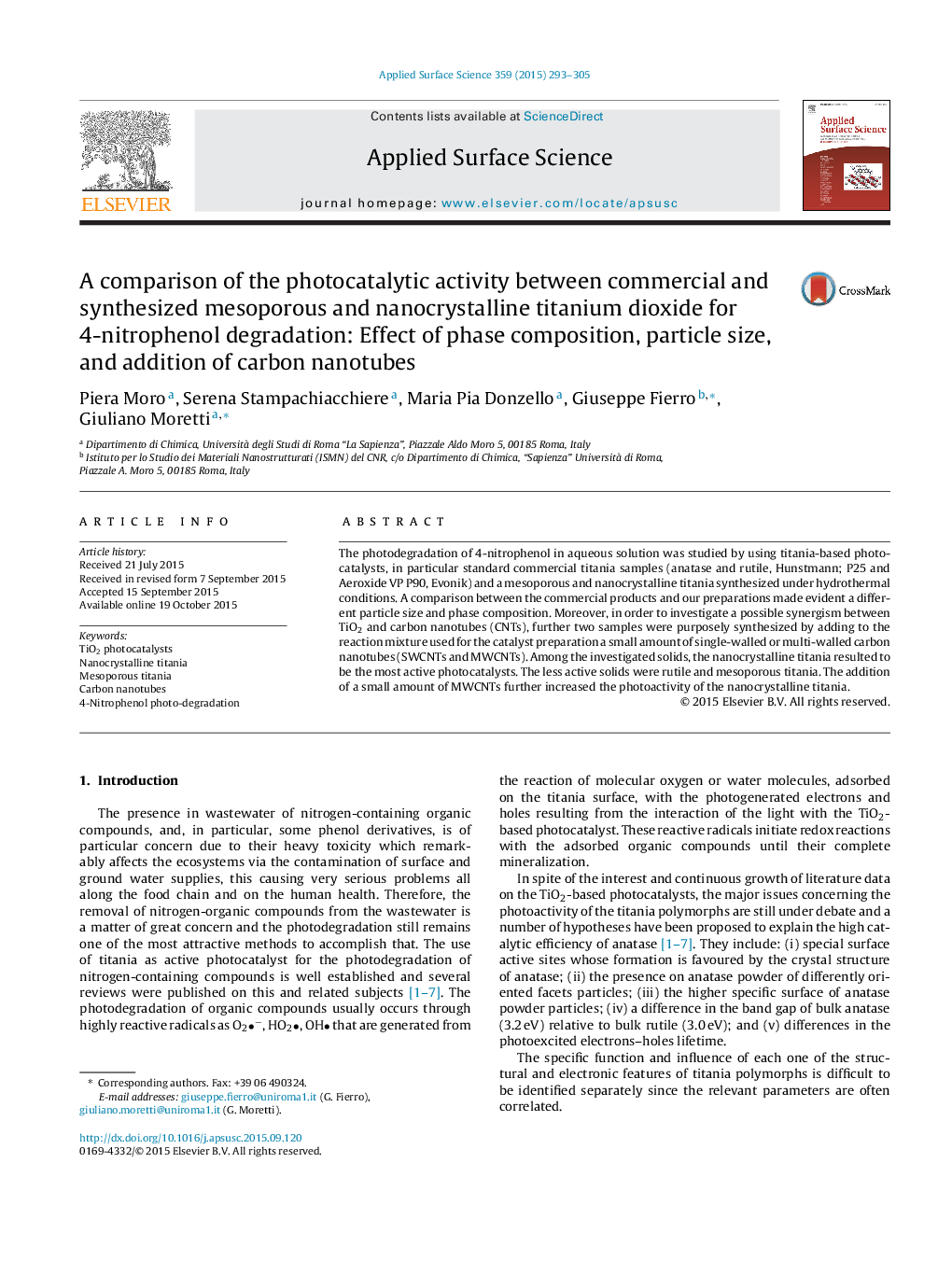| Article ID | Journal | Published Year | Pages | File Type |
|---|---|---|---|---|
| 5357492 | Applied Surface Science | 2015 | 13 Pages |
Abstract
The photodegradation of 4-nitrophenol in aqueous solution was studied by using titania-based photocatalysts, in particular standard commercial titania samples (anatase and rutile, Hunstmann; P25 and Aeroxide VP P90, Evonik) and a mesoporous and nanocrystalline titania synthesized under hydrothermal conditions. A comparison between the commercial products and our preparations made evident a different particle size and phase composition. Moreover, in order to investigate a possible synergism between TiO2 and carbon nanotubes (CNTs), further two samples were purposely synthesized by adding to the reaction mixture used for the catalyst preparation a small amount of single-walled or multi-walled carbon nanotubes (SWCNTs and MWCNTs). Among the investigated solids, the nanocrystalline titania resulted to be the most active photocatalysts. The less active solids were rutile and mesoporous titania. The addition of a small amount of MWCNTs further increased the photoactivity of the nanocrystalline titania.
Related Topics
Physical Sciences and Engineering
Chemistry
Physical and Theoretical Chemistry
Authors
Piera Moro, Serena Stampachiacchiere, Maria Pia Donzello, Giuseppe Fierro, Giuliano Moretti,
